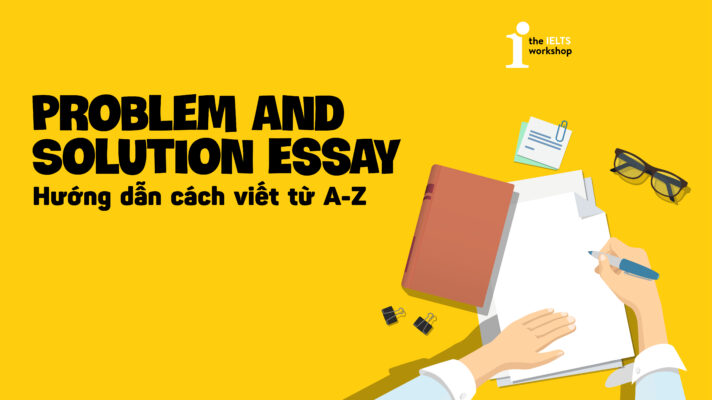IELTS Cambridge 16 Test 3 Reading Passage 1 khám phá công nghệ đóng tàu và kỹ thuật điều hướng của người La Mã, nhấn mạnh vai trò quan trọng của ngành hàng hải trong sự phát triển của đế chế. Bài đọc yêu cầu thí sinh nắm bắt thông tin chi tiết và phân tích các tiến bộ kỹ thuật trong lịch sử hàng hải La Mã.
1. Đáp án IELTS Cambridge 16 Test 3 Reading Passage 1
| Câu hỏi | Đáp án |
| 1 | False |
| 2 | Not given |
| 3 | False |
| 4 | True |
| 5 | True |
| 6 | lightweight |
| 7 | bronze |
| 8 | levels |
| 9 | hull |
| 10 | triangular |
| 11 | music |
| 12 | grain |
| 13 | towboats |
2. Phân tích chi tiết đáp án IELTS Cambridge 16 Test 3 Reading Passage 1
Câu 1
Đáp án: True
Câu hỏi: The Romans’ shipbuilding skills were passed on to the Greeks and the Egyptians. (Kỹ năng đóng tàu của người La Mã đã được truyền lại cho người Hy Lạp và Ai Cập.)
Vị trí: Đoạn A.
Transcript: The Romans were not traditionally sailors but mostly land-based people, who learned to build ships from the people that they conquered, namely the Greeks and the Egyptians.
Phân tích: Đoạn văn cho biết người La Mã học kỹ năng đi biển và đóng tàu từ những dân tộc họ chinh phục, bao gồm người Hy Lạp và Ai Cập. Do đó, kỹ năng không phải do họ truyền lại mà ngược lại, họ tiếp thu từ những nền văn minh trước đó. Điều này trái ngược với nội dung câu hỏi.
Câu 2
Đáp án: Not given
Câu hỏi: Skilled craftsmen were needed for the mortise and tenon method of fixing planks. (Cần có thợ lành nghề để áp dụng phương pháp ghép mộng và lỗ trong việc cố định các tấm ván.)
Vị trí: Đoạn B.
Transcript: Starting from the 6th century BCE, they were fixed using a method called mortise and tenon, whereby one plank locked into another without the need for stitching.
Phân tích: Đoạn văn chỉ mô tả phương pháp mortise and tenon, không nhắc đến việc liệu có cần thợ lành nghề để thực hiện hay không. Vì vậy, không thể xác định đúng sai.
Câu 3
Đáp án: False
Câu hỏi: The later Mediterranean shipbuilding method involved building the hull before the frame. (Phương pháp đóng tàu sau này của vùng Địa Trung Hải là đóng thân tàu trước khung tàu.)
Vị trí: Đoạn B.
Transcript: Mediterranean shipbuilders shifted to another shipbuilding method, still in use today, which consisted of building the frame first and then proceeding with the hull and the other components of the ship
Phân tích: Đoạn văn nói rõ khung tàu được dựng trước, sau đó mới đến thân tàu. Điều này trái ngược hoàn toàn với thông tin trong câu hỏi.
Câu 4
Đáp án: True
Câu hỏi: The Romans called the Mediterranean Mare Nostrum because they dominated it. (Người La Mã gọi Địa Trung Hải là Mare Nostrum vì họ kiểm soát khu vực này.)
Vị trí: Đoạn C.
Transcript: Eventually, Rome’s navy became the largest and most powerful in the Mediterranean, and the Romans had control over what they therefore called Mare Nostrum meaning ‘our sea’.
Phân tích: Đoạn văn khẳng định người La Mã kiểm soát Địa Trung Hải và gọi nó là “biển của chúng ta”. Điều này trùng khớp với nội dung trong câu hỏi.
Câu 5
Đáp án: True
Câu hỏi: Most rowers in Roman ships were people from the Roman army. (Phần lớn những người chèo thuyền trên tàu La Mã đều là lính trong quân đội La Mã.)
Vị trí: Đoạn D.
Transcript: It is worth noting that contrary to popular perception, rowers were not slaves but mostly Roman citizens enrolled in the military.
Phân tích: Đoạn văn xác nhận rằng phần lớn người chèo thuyền là công dân La Mã trong quân đội, đúng như nội dung câu hỏi.
Câu 6
Đáp án: lightweight
Câu hỏi: Warships had to be ______ so they could move quickly.
Vị trí: Đoạn C.
Transcript: Warships were built to be lightweight and very speedy.
Phân tích: Tính từ “lightweight” (nhẹ) dùng để mô tả đặc điểm của tàu chiến, giúp tàu di chuyển nhanh chóng.
Câu 7
Đáp án: bronze
Câu hỏi: The battering ram was made of ______.
Vị trí: Đoạn C.
Transcript: They had a bronze battering ram, which was used to pierce the timber hulls or break the oars of enemy vessels.
Phân tích: Thanh đập (battering ram) được làm bằng đồng (bronze) để phá hỏng tàu địch.
Câu 8
Đáp án: levels
Câu hỏi: The fame of the Uffington White Horse is due to its size. (Sự nổi tiếng của Ngựa trắng Uffington là nhờ vào kích thước của nó.)
Vị trí: Đoạn D.
Transcript: The ‘trireme’ was the dominant warship from the 7th to 4th century BCE. It had rowers in the top, middle and lower levels, and approximately 50 rowers in each bank.
Phân tích: Người chèo thuyền được bố trí ở ba tầng khác nhau (levels) trên tàu.
Câu 9
Đáp án: hull
Câu hỏi: The V-shaped ______ of merchant ships lay far below the surface of the sea. (Phần hình chữ V ______ của những con tàu buôn nằm sâu bên dưới bề mặt biển.)
Vị trí: Đoạn E.
Transcript: They had a wider hull, double planking and a solid interior for added stability. Unlike warships, their V-shaped hull was deep underwater, meaning that they could not sail too close to the coast.
Phân tích: Thân tàu hình chữ V (hull) nằm sâu dưới mặt nước là đặc điểm của tàu buôn.
Câu 10
Đáp án: triangular
Câu hỏi: A sail at the front was sometimes added, which had a ______ shape. (Một cánh buồm ở phía trước đôi khi được thêm vào, có hình dạng ______.)
Vị trí: Đoạn E.
Transcript: They had from one to three masts with large square sails and a small triangular sail at the bow.
Phân tích: Tàu có thể được trang bị thêm buồm nhỏ hình tam giác (triangular) ở mũi thuyền.
Câu 11
Đáp án: music
Câu hỏi: On both warships and merchant ships, ______ was sometimes played to help coordinate the rowers. (Trên cả tàu chiến và tàu buôn, đôi khi ______ được chơi để giúp điều phối những người chèo.)
Vị trí: Đoạn E.
Transcript: Music would be played on an instrument, and the rowers would keep time with it.
Phân tích: Âm nhạc (music) được sử dụng trên cả tàu chiến và tàu buôn để hỗ trợ đồng bộ các tay chèo.
Câu 12
Đáp án: grain
Câu hỏi: Roman merchant ships often carried agricultural goods such as ______. (Các tàu buôn La Mã thường chở các mặt hàng nông sản như ______.)
Vị trí: Đoạn F.
Transcript: The cargo on merchant ships included raw materials (e.g. iron bars, copper, marble and granite), and agricultural products (e.g. grain from Egypt’s Nile valley).
Phân tích: Một trong những hàng hóa nông sản phổ biến là ngũ cốc (grain), được vận chuyển từ Ai Cập.
Câu 13
Đáp án: towboats
Câu hỏi: ______ pulled into position beside merchant ships to guide them into port. (______ kéo vào vị trí bên cạnh các tàu buôn để hướng dẫn chúng vào cảng.)
Vị trí: Đoạn F.
Transcript: Large merchant ships would approach the destination port and, just like today, be intercepted by a number of towboats that would drag them to the quay.
Phân tích: Thuyền kéo (towboats) được sử dụng để đưa tàu buôn vào bến cảng một cách chính xác.
3. Bản dịch chi tiết IELTS Cambridge 16 Test 3 Reading Passage 1
A. Shipbuilding today is based on science and ships are built using computers and sophisticated tools. Shipbuilding in ancient Rome, however, was more of an art relying on estimation, inherited techniques and personal experience. The Romans were not traditionally sailors but mostly land-based people, who learned to build ships from the people that they conquered, namely the Greeks and the Egyptians.
- sophisticated (adj): tinh vi, phức tạp
- conquer (verb): chinh phục, xâm chiếm
Ngày nay, kỹ thuật đóng tàu dựa trên nền tảng khoa học với sự trợ giúp của máy tính và các thiết bị tiên tiến. Trái lại, vào thời kỳ La Mã cổ đại, đóng tàu là một loại hình nghệ thuật phụ thuộc vào sự ước lượng, tay nghề truyền lại và kinh nghiệm của từng cá nhân. Người La Mã không phải là dân đi biển bẩm sinh mà chủ yếu sống trên đất liền, và họ học kỹ thuật đóng tàu từ những dân tộc bị họ chinh phục, tiêu biểu là người Hy Lạp và người Ai Cập.
B. There are a few surviving written documents that give descriptions and representations of ancient Roman ships, including the sails and rigging. Excavated vessels also provide some clues about ancient shipbuilding techniques. Studies of these have taught us that ancient Roman shipbuilders built the outer hull first, then proceeded with the frame and the rest of the ship. Planks used to build the outer hull were initially sewn together. Starting from the 6th century BCE, they were fixed using a method called mortise and tenon, whereby one plank locked into another without the need for stitching. Then in the first centuries of the current era, Mediterranean shipbuilders shifted to another shipbuilding method, still in use today, which consisted of building the frame first and then proceeding with the hull and the other components of the ship. This method was more systematic and dramatically shortened ship construction times. The ancient Romans built large merchant ships and warships whose size and technology were unequalled until the 16th century CE.
- excavate (verb): khai quật
- unequalled(adj): vượt trội
- hull (noun): thân tàu
Một số tài liệu cổ còn lại cho ta biết hình dáng và cấu trúc của tàu La Mã xưa, bao gồm cả buồm và hệ thống giàn buồm. Các con tàu được khai quật cũng cho thấy những kỹ thuật đóng tàu cổ đại. Qua nghiên cứu, các chuyên gia phát hiện người La Mã xưa chế tạo vỏ tàu bên ngoài trước, rồi mới hoàn thiện khung và các phần còn lại. Ban đầu, các tấm ván được khâu lại với nhau; nhưng từ thế kỷ thứ 6 TCN, họ dùng kỹ thuật lỗ mộng thay cho việc may. Đến đầu Công nguyên, người Địa Trung Hải chuyển sang kiểu đóng tàu hiện đại hơn – đóng khung trước rồi mới đến thân – giúp giảm đáng kể thời gian thi công. Tàu buôn và tàu chiến của La Mã thời đó có quy mô và công nghệ nổi bật vượt xa thời kỳ cho tới tận thế kỷ 16.
C. Warships were built to be lightweight and very speedy. They had to be able to sail near the coast, which is why they had no ballast or excess load and were built with a long, narrow hull. They did not sink when damaged and often would lie crippled on the sea’s surface following naval battles. They had a bronze battering ram, which was used to pierce the timber hulls or break the oars of enemy vessels. Warships used both wind (sails) and human power (oarsmen) and were therefore very fast. Eventually, Rome’s navy became the largest and most powerful in the Mediterranean, and the Romans had control over what they therefore called Mare Nostrum meaning ‘our sea’.
- navy (noun): hải quân
- ballast (noun): vật dằn tàu
Tàu chiến thời cổ La Mã được thiết kế nhẹ và có tốc độ cao, thích hợp để di chuyển gần bờ biển. Do đó, chúng không mang theo vật nặng như nước dằn hay hàng hóa thừa và có phần thân dài, hẹp. Khi bị trúng đòn, chúng không chìm mà vẫn nổi lềnh bềnh sau các trận chiến. Những tàu này được trang bị mũi đâm bằng đồng, dùng để phá thân tàu hoặc làm gãy mái chèo đối phương. Tàu chiến La Mã sử dụng kết hợp cả buồm lẫn sức người chèo, giúp gia tăng tốc độ đáng kể. Sau cùng, hải quân La Mã phát triển thành lực lượng thống trị Địa Trung Hải và kiểm soát khu vực mà họ gọi là Mare Nostrum – nghĩa là “biển của chúng ta”.
D. There were many kinds of warship. The ‘trireme’ was the dominant warship from the 7th to 4th century BCE. It had rowers in the top, middle and lower levels, and approximately 50 rowers in each bank. The rowers at the bottom had the most uncomfortable position as they were under the other rowers and were exposed to the water entering through the oar-holes. It is worth noting that contrary to popular perception, rowers were not slaves but mostly Roman citizens enrolled in the military. The trireme was superseded by larger ships with even more rowers.
- expose (verb): để lộ, phơi ra
- supersede (verb): thay thế
- perception (noun): nhận thức
Có nhiều mẫu tàu chiến khác nhau, trong đó ‘trireme’ là loại nổi bật nhất từ thế kỷ 7 đến 4 TCN. Tàu có ba tầng chèo – trên, giữa và dưới – mỗi bên có khoảng 50 tay chèo. Những người chèo ở tầng dưới cùng phải ngồi ở vị trí khó chịu nhất, dễ bị nước biển tràn vào. Khác với suy nghĩ phổ biến, các tay chèo này phần lớn là công dân La Mã tình nguyện phục vụ quân đội chứ không phải nô lệ. Về sau, trireme được thay thế bằng những mẫu tàu lớn hơn với lực lượng chèo đông đảo hơn.
E. Merchant ships were built to transport lots of cargo over long distances and at a reasonable cost. They had a wider hull, double planking and a solid interior for added stability. Unlike warships, their V-shaped hull was deep underwater, meaning that they could not sail too close to the coast. They usually had two huge side rudders located off the stern and controlled by a small tiller bar connected to a system of cables. They had from one to three masts with large square sails and a small triangular sail at the bow. Just like warships, merchant ships used oarsmen, but coordinating the hundreds of rowers in both types of ship was not an easy task. In order to assist them, music would be played on an instrument, and oars would then keep time with this.
- cargo (noun): hàng hóa
- rudder (noun): bánh lái
- tiller (noun): tay lái
Tàu buôn được chế tạo để chuyên chở số lượng lớn hàng hóa trên các hải trình dài với mức chi phí phải chăng. Thân tàu của chúng rộng, có cấu trúc ván kép và bên trong được gia cố chắc chắn để đảm bảo độ ổn định. Trái ngược với tàu chiến, phần thân hình chữ V của tàu buôn nằm sâu dưới mặt nước nên không thể đi sát bờ. Những tàu này thường có hai bánh lái lớn ở phía sau và được điều khiển bằng cần nhỏ nối với hệ thống dây cáp. Chúng có từ một đến ba cột buồm với buồm vuông lớn và một buồm tam giác nhỏ ở mũi. Cũng như tàu chiến, tàu buôn sử dụng tay chèo, nhưng việc điều phối hàng trăm người chèo đòi hỏi sự phối hợp cao, và âm nhạc được sử dụng để giữ nhịp cho chuyển động của mái chèo.
F. The cargo on merchant ships included raw materials (e.g. iron bars, copper, marble and granite), and agricultural products (e.g. grain from Egypt’s Nile valley). During the Empire, Rome was a huge city by ancient standards of about one million inhabitants. Goods from all over the world would come to the city through the port of Pozzuoli situated west of the bay of Naples in Italy and through the gigantic port of Ostia situated at the mouth of the Tiber River. Large merchant ships would approach the destination port and, just like today, be intercepted by a number of towboats that would drag them to the quay.
- gigantic (adj): khổng lồ
- inhabitant (noun): cư dân
- towboat (noun): thuyền kéo
Những tàu buôn La Mã thường chở nguyên liệu thô như đồng, sắt, đá cẩm thạch, đá granit và sản phẩm nông nghiệp như lúa mì từ vùng châu thổ sông Nile. Trong thời kỳ Đế chế, Rome là đô thị cực kỳ lớn với dân số khoảng một triệu người – một con số khổng lồ theo tiêu chuẩn thời đó. Hàng hóa được vận chuyển từ khắp nơi tới Rome thông qua cảng Pozzuoli phía tây vịnh Naples và cảng Ostia rộng lớn ở cửa sông Tiber. Khi tàu đến gần bến, các thuyền kéo sẽ tiếp cận và kéo tàu vào bờ giống như ngày nay.
G. The time of travel along the many sailing routes could vary widely. Navigation in ancient Rome did not rely on sophisticated instruments such as compasses but on experience, local knowledge and observation of natural phenomena. In conditions of good visibility, seamen in the Mediterranean often had the mainland or islands in sight, which greatly facilitated navigation. They sailed by noting their position relative to a succession of recognisable landmarks. When weather conditions were not good or where land was no longer visible, Roman mariners estimated directions from the pole star or, with less accuracy, from the Sun at noon. They also estimated directions relative to the wind and swell. Overall, shipping in ancient Roman times resembled shipping today with large vessels regularly crossing the seas and bringing supplies from their Empire.
- navigation (noun): sự điều hướng
- seamen (noun): người đi biển
Thời gian đi lại trên các tuyến hải trình của người La Mã cổ thay đổi đáng kể tùy điều kiện. Thay vì dựa vào công cụ hiện đại như la bàn, họ định hướng bằng kiến thức thực tế, kinh nghiệm lâu năm và quan sát hiện tượng tự nhiên. Khi tầm nhìn tốt, các thủy thủ ở Địa Trung Hải thường có thể nhìn thấy đất liền hoặc đảo gần đó, giúp dễ dàng xác định hướng đi. Họ dựa vào các mốc địa lý quen thuộc để điều hướng. Trong điều kiện xấu hoặc khi không còn thấy đất, họ nhìn sao Bắc Cực hoặc mặt trời vào giữa trưa để ước lượng phương hướng. Họ cũng định hướng dựa theo gió và sóng biển. Nhìn chung, vận tải biển thời La Mã khá giống với ngày nay, với các tàu lớn thường xuyên vượt biển để chở hàng từ khắp Đế chế.
Series giải đề IELTS Cambridge 16
- [PDF + Audio] Sách IELTS Cambridge 16
- Đáp án Cambridge 16 & Lời giải chi tiết: Test 1 – Test 4
- Giải IELTS Cambridge 16 Test 3 Listening Part 1: Junior cycle Camp
- Giải IELTS Cambridge 16 Test 3 Listening Part 2: Working in the agriculture and horticulture sectors
- Giải IELTS Cambridge 16 Test 3 Listening Part 3: Artificial sweeteners
- Giải IELTS Cambridge 16 Test 3 Listening Part 4: Hand knitting
- Giải Cambridge IELTS 16 Test 3 Reading Passage 2: Climate change reveals ancient artefacts in Norway’s glaciers
- Giải Cambridge IELTS 16 Test 3 Reading Passage 3: Plant ‘thermometer’ triggers springtime growth by measuring night-time heat
Tóm lại, hiểu về Roman shipbuilding and navigation trong IELTS Cambridge 16 Test 3 Reading Passage 1 sẽ giúp bạn nâng cao kỹ năng đọc hiểu và chuẩn bị tốt hơn cho kỳ thi IELTS. Nếu bạn muốn cải thiện khả năng làm bài Reading và luyện tập nhiều chủ đề thú vị như thế này, đừng bỏ lỡ cơ hội tham gia khóa học IELTS miễn phí tại The IELTS Workshop ngay hôm nay!



![[Review] Trọn bộ sách Barron’s IELTS – So với Cambridge, Collins thì có bằng?](https://onthiielts.com.vn/wp-content/uploads/2021/01/barron-ielts-tron-bo-4-ky-nang-764x400.jpg)



![[PDF] English Vocabulary in Use Pre Intermediate & Intermediate 4th Edition](https://onthiielts.com.vn/wp-content/uploads/2020/01/english-vocabulary-in-use-intermediate-711x400.jpg)

